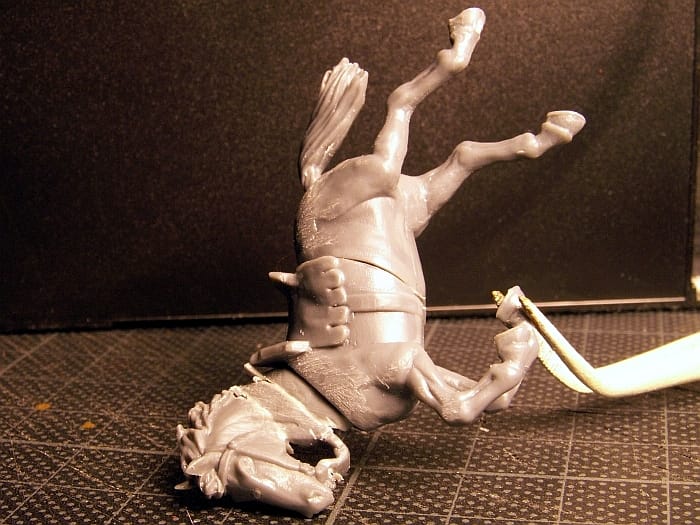From 1972 to 1974 the great Sid Horton published a series of modelling articles in Airfix magazine: "Charge of the Light Brigade" and "Return from Balaclava". He used the then new 54 mm Airfix plastic figure kits - mostly napoleonics - and converted them to new crimean war miniatures. I had a subscription for the magazine (mainly for tank and aircraft modelling) and was hooked to Horton's work from the very first moment. It was my start into the miniature world, and I learned to convert plastic figures with those brilliant articles. The famous "Return from Balaclava" painting by Lady Butler fascinated me and I started to recreate it as a diorama with the Airfix conversions.
Well, one of the very early "started-but-not-finished-projects", I'm sure you know what I mean, but I do still have all of the conversions in a small box; see them below.



Why do I mention this? Because Horton showed me how to convert cheap plastic men and horses with modelling knife, saw, putty and poly cement and to create something entirely new from it, and that's one of my modelling passions till today. So, after getting the Perry WotR-plastics in my hands, I had lots of ideas to convert them a bit ...
First, the horses. They are among the very best sculpted horses I've seen so far in this scale, and you could create lots of variations combining the body halves and heads; this has been counted at Captain Blood's great WotR-WIP-thread already. But could you go further? What about modifying completed horse bodys by cutting them in two parts again, front and back, and exchange those halves? Endless possibilities ...
I started to modify leg positions to get new dynamic galloping poses, a bit more extreme than the standard horse halves would let you, but nonetheless a classic pose:

It's essential to cut the legs by roughly 45° cuts with a fine jewellers saw to get them correctly repositioned, and to support other cuts with polystyrene slices from the parts frames. When the main operations are glued with liquid cement and finished, everything must harden overnight to get a firm basis for further work.



The joints were filled and smoothed over with Magic Sculpt, and new harness and reins added from very thin plasticard.
On to advanced modelling: a hit and falling horse (the falling rider will be a real modelling experience later ...):


To get the pose right, two different horse halves were combined and slightly twisted, and the neck was cut two times and bend to the side, supported with plastic slices. The two left over body halves were also combined and another new pose created, this time a bit more relaxed one:


I will continue to show my conversions here when finding time, and hopefully the fully painted figures as well.
Have fun!
